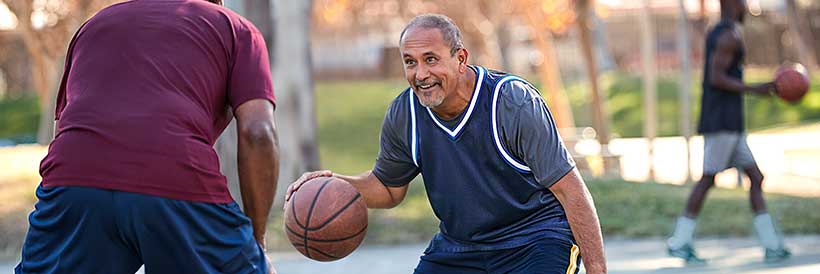Secret #25 Keep Your Body Fit
To slow down the ageing process and keep you healthy, one of the best physical activities you can do is, taking a daily walk, unless it’s pouring rain.

A 30-40 minute walk in the fresh air keeps the body parts moving, clears the head & can prevent dementia. While walking, focus on deepening your breath and focussing on what is good in your life.
This helps to keep you more positive and reduce depression. Walking with a friend, walking the dog or being part of a walking group adds variety to your walks.
I live in Brisbane which can get quite hot in summer and I found there are walking groups in shopping centres early in the morning taking advantage of the air conditioning. Also a great way to meet new people.
I also bought a treadmill for those rainy days and those times I cannot get out. Now I am no runner so I did not need the top of the range treadmill. I bought mine from Crazy Sales for $260 and had it delivered.
https://www.crazysales.com.au/online-genki-motorized-electric-treadmill-exercise-machine-131489.html
Good Water
When we had our 4 boys it seemed a common event every year that they would get colds and the flu. For some reason I decided to get a water filter and from then on the colds and flus declined significantly.
I am not sure if it was cleaner water or that they drank more and stayed hydrated more but it worked. I have carried on the practice ever since. It also saves a fortune on buying bottled water.
Again Crazy Sales has a wide variety of filters. This is the bench model we got.
https://www.crazysales.com.au/online-8-stage-water-filter-2-bonus-filters-76157.html
Retirement Check up
How is your health? If you didn’t get a medical check up before you retired, now is the time to do so. Ask your doctor whether you have any restrictions on exercise and what they recommend. You’ll likely hear that exercise and walking are part of the plan for reducing your health risks and living with conditions such as diabetes and arthritis.
If you have any difficulties with mobility, it’s a good time to get a referral for physical therapy or occupational therapy. A therapist can help improve your functioning. If your feet have been bothering you, see a podiatrist for recommended footwear or orthotics.
What Exercise Do You Need?
The recommended amount of exercise for seniors and those age 50 to 64 with a chronic condition is:
Moderate intensity aerobic exercise such as brisk walking, swimming, or bike riding for 30 minutes per day, five days per week. Or, vigorous intensity aerobic exercise such as running for 20 minutes per day, three days per week. This supports cardiovascular health.
Strength training exercise two to three days per week with eight to 10 strength training exercises such as resistance exercises and working with dumbbells or weight machines. These exercises support maintaining muscle mass, bone density, and overall physical functioning.
Flexibility exercises for 10 minutes daily to maintain range of motion.
Reducing inactive time and sitting: Studies have found that time spent sitting can increase health risks. As you change from your working life to retirement, you’ll have to explore ways to stay active throughout the day, getting up and moving around every hour. Now is the time to work on getting 10,000 steps per day.
Where Can You Exercise?
You have a few range of choices for when and where to exercise in retirement. I love walking in the shopping centers in summer and parks in winter.
Gyms and Fitness Centres: You may have been using the fitness centre at work but now it’s more convenient to find a gym or pool closer to home.
Your health plan may have discounted memberships at local gyms. Check for community fitness centres and senior centres. You may even be able to use the gym or pool at a community college for no fee if you are taking a class there no any topic that interests you.
Personal Trainer or Group Exercise: You can get started right exercising by using a physical trainer at a health club to recommend a set of exercises customized just for you. You can also join an exercise class at a fitness centre and find what activities you enjoy the most.
Home Gym: Once you know what exercises you need to do, you’ll better know what equipment you may want for a home gym. It can be as simple as some resistance bands, a set of dumbbells, an exercise ball, and an exercise mat. A treadmill, elliptical trainer, or stationary cycle is a bigger investment but can be worth it for convenient cardio exercise in any weather.
Walking, Running, and Cycling Outdoors: Explore the possibilities for walking and jogging trails in your community. You may not have noticed the greenway paths, parks, and tracks available for you to use. Those 20 to 30 minutes you need to spend walking, running, or cycling can be done outdoors in a safe and pleasant environment. You can use apps such as MapMyWalk to see where others in your area have been walking and cycling.
Creating an Exercise Routine
Form good habits in your new life. Set a schedule to enjoy golf, group exercise classes, and gym time.
You can also explore finding a walking group or club. If you have a commitment to other people to join them for an activity, you are more likely to follow through.
Check Meetup.com for groups who share your interest in walking, running, hiking, or cycling. You may be astonished at how many opportunities are available for little or no cost.
You have a choice now as to when you hit the gym. You can go in off hours when it isn’t as crowded. You may notice more people of your age are doing their workouts at 10 am or 2 pm. You may even make new workout friends.
Suggested Workout Schedule
Monday: Aerobic exercise day. 30 minutes brisk walking, cycling, or swimming. 10 minutes flexibility.
Tuesday: Strength training day when the gym may be less crowded. 10 minutes flexibility exercise.
Wednesday: Aerobic exercise and 10 minutes of flexibility exercise.
Thursday: Strength training day and 10 minutes of flexibility exercise. Explore group classes for aerobic dance and other exercises.
Friday: Aerobic exercise 30 minutes and 10 minutes of flexibility exercise.
Saturday: Aerobic exercise can include a hike, golf, bike ride with friends or family. Organize an outing with those who only have weekends free.
Sunday: Aerobic exercise for 30 minutes, 10 minutes of flexibility exercise.
Adding Activity to Your Life
If you had an active job, you’ll need to replace that activity in your retired life. For those who had sedentary jobs, now in the chance to develop good habits for staying active all day long.
Walk the dog: Your best friend can use more activity as well. Now is the time for extended walks with your dog, or going out more frequently throughout the day.
Walk or bike to the store, bank, post office, and other destinations. Leave the car behind and walk or cycle to your nearby destinations. You can multitask by getting in your aerobic exercise time while also doing your shopping or other tasks. Get a backpack or bag for carrying home items comfortably.
Gardening, organizing, decluttering, and home improvement: You’ll see the need for flexibility exercise when you start tackling the honey-do projects that have been put aside for years. These can eliminate a lot of sitting time.
Volunteer: There are many opportunities to volunteer that will keep you up and moving around. What causes and programs do you support? See what they offer that will get you out of the house. These can range from cleaning at a no-kill animal shelter, packing and delivering meals to seniors and families in need, improving trails, litter pickup, yard and home care for seniors and the physically challenged, and more.
Explore actively: Get out to parks and gardens in your vicinity to reconnect with nature. Join in walking tours to explore the history and architecture of your community or places you visit. If you travel to see family and friends, use your newly free time to explore their areas as well.
Gearing Up for Exercise
Now is the time to use a fitness tracker such as a Fitbit to motivate you to stay active. The best models will track your aerobic exercise time each day automatically as well as total daily steps.
Many also will track inactive time and remind you to get up and move each hour. They can also track your sleep quality and have an app to track your diet.
Many designs also will detect your heart rate or link with a heart rate monitor chest band to measure exercise intensity.
You need the right shoes and exercise clothing to support your activities. Visit the most-serious running shoe store in your area to get properly fitted for athletic shoes.
A home treadmill or elliptical trainer can eliminate excuses for exercise when it’s too hot, cold, or rainy leave the house.
Secret #26 Communication
